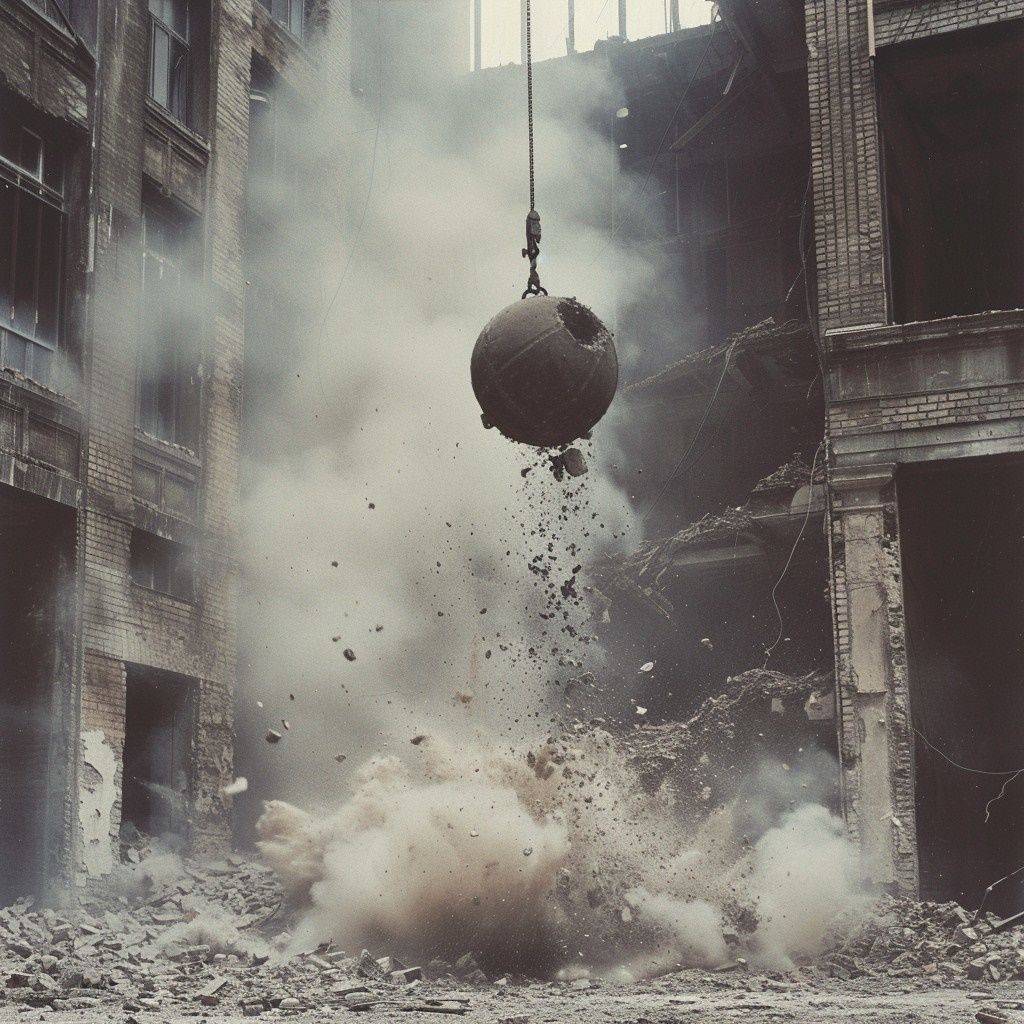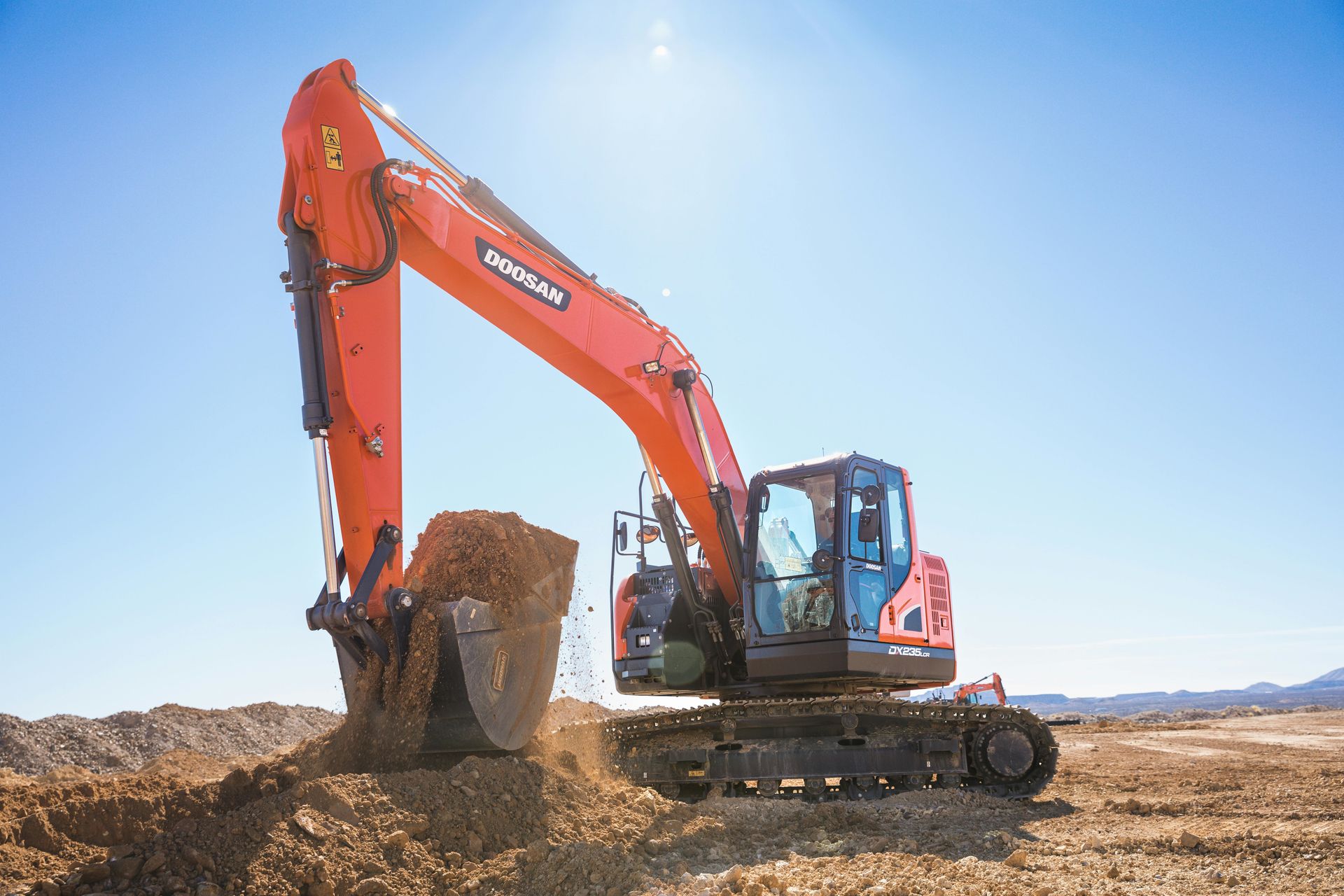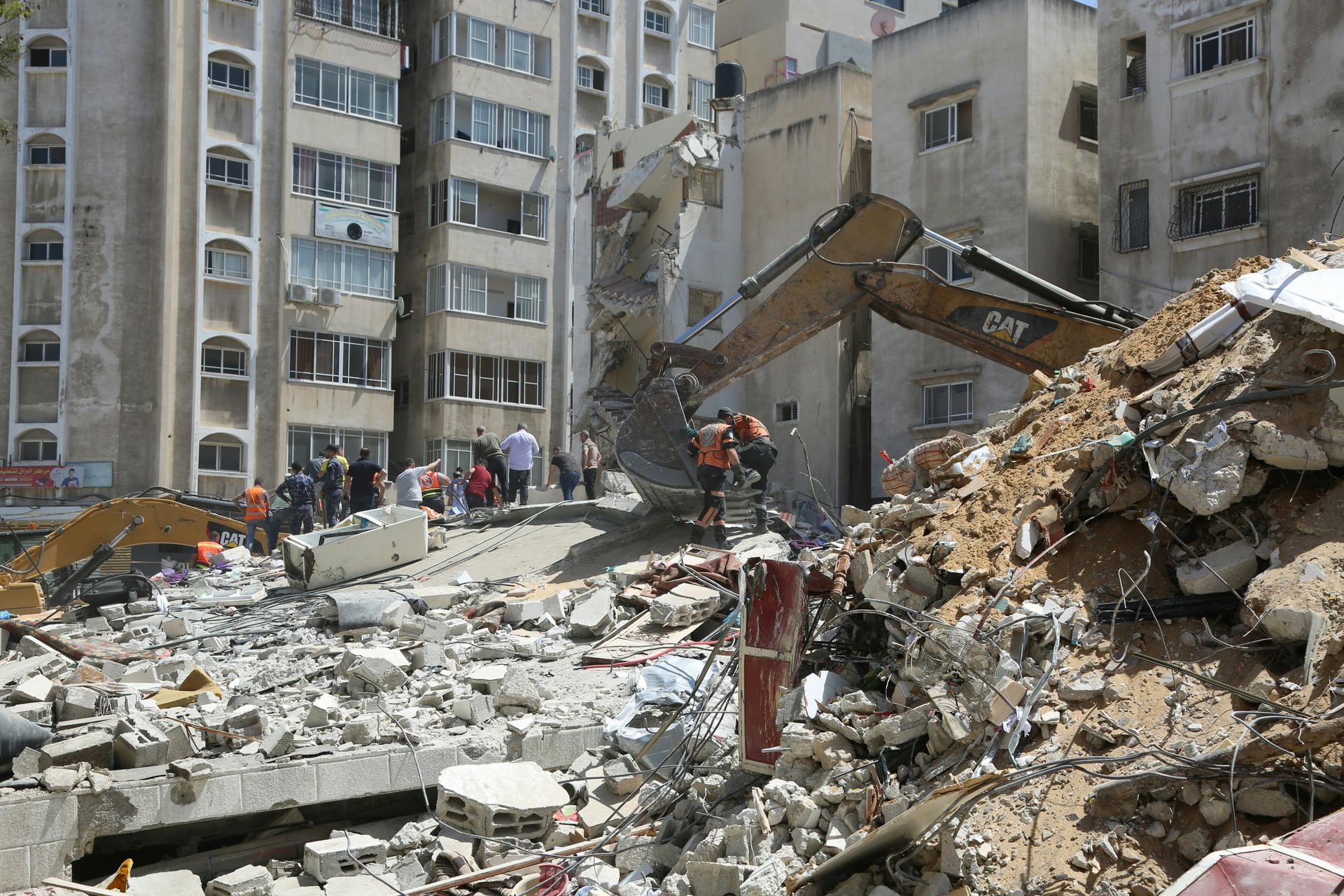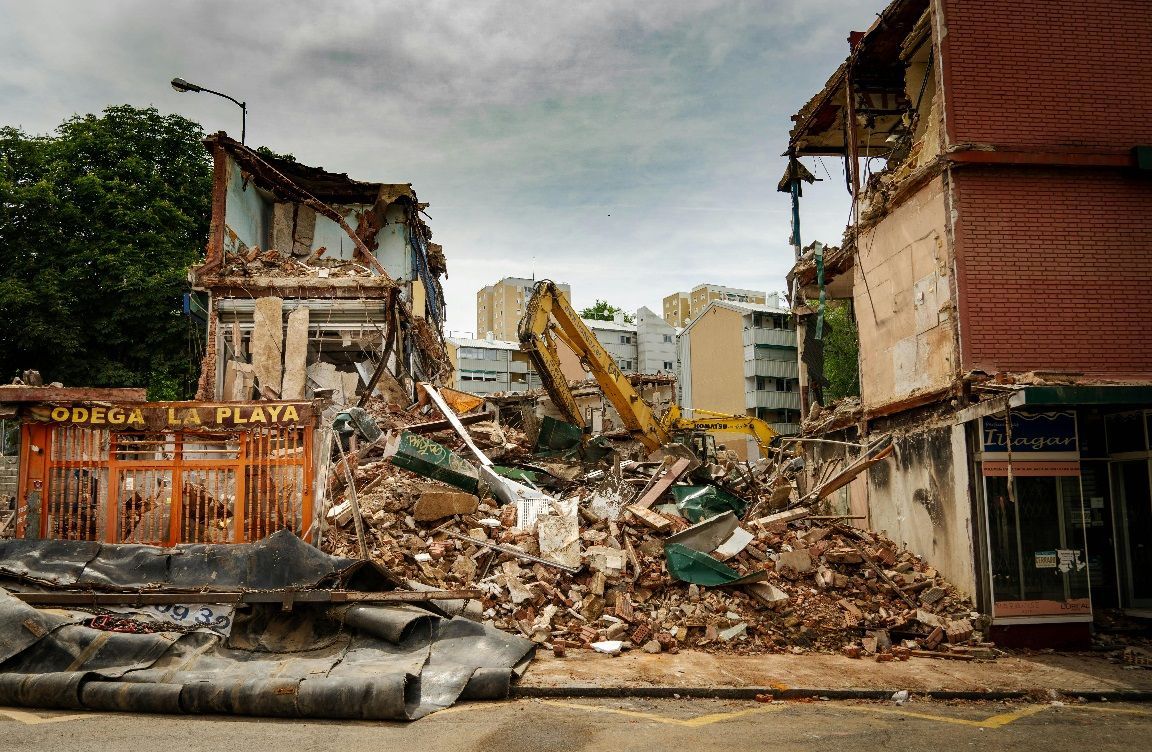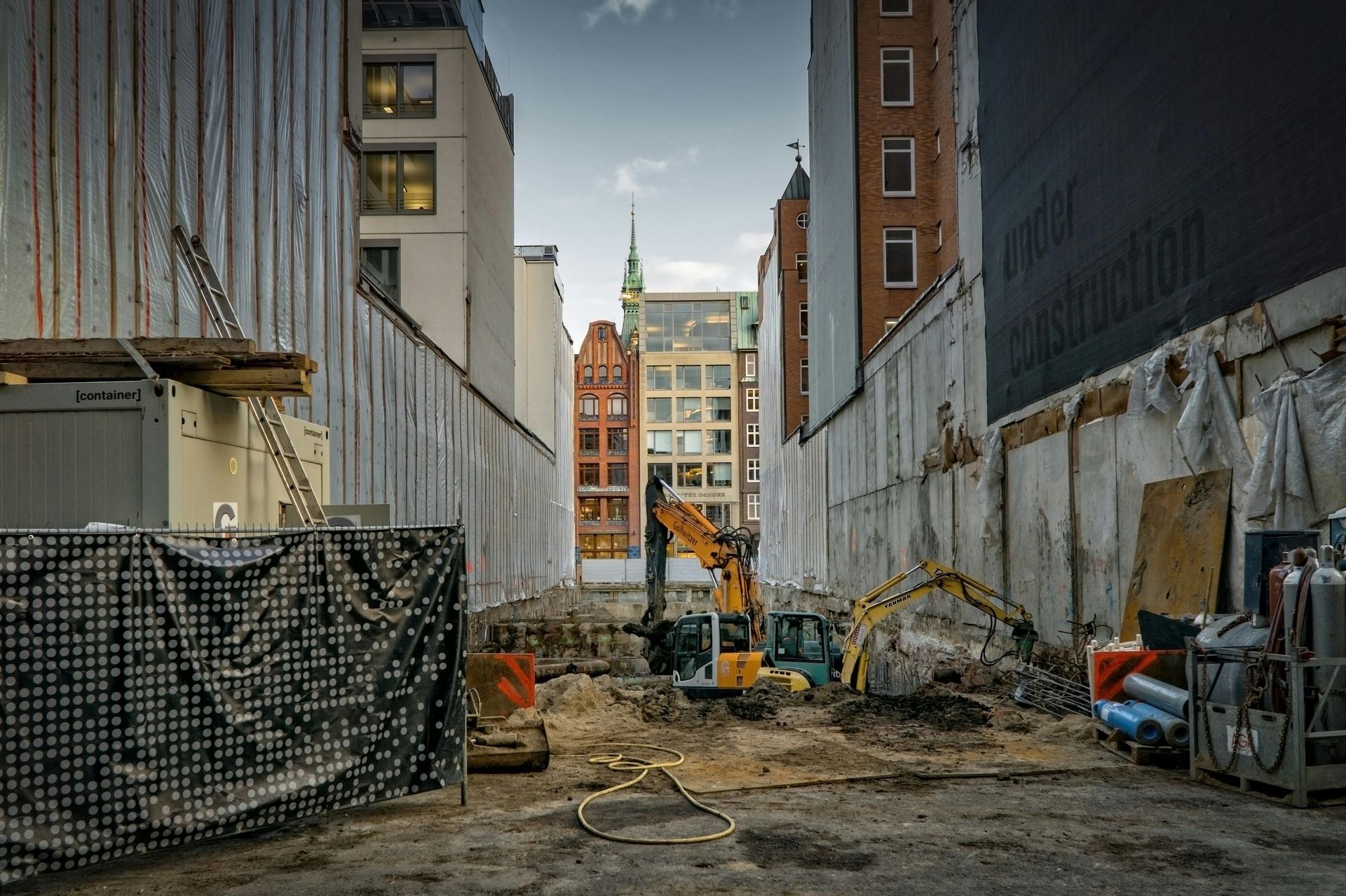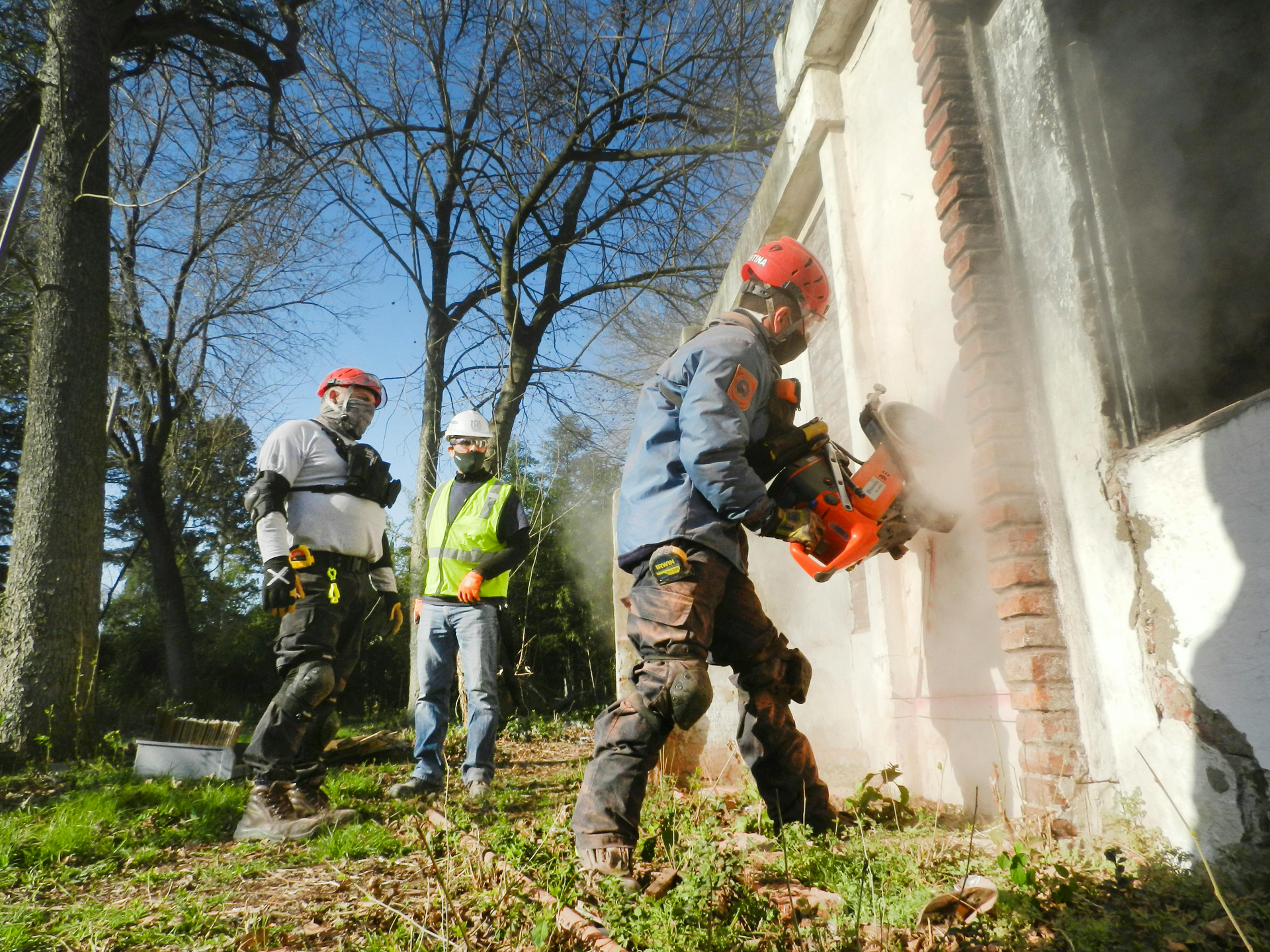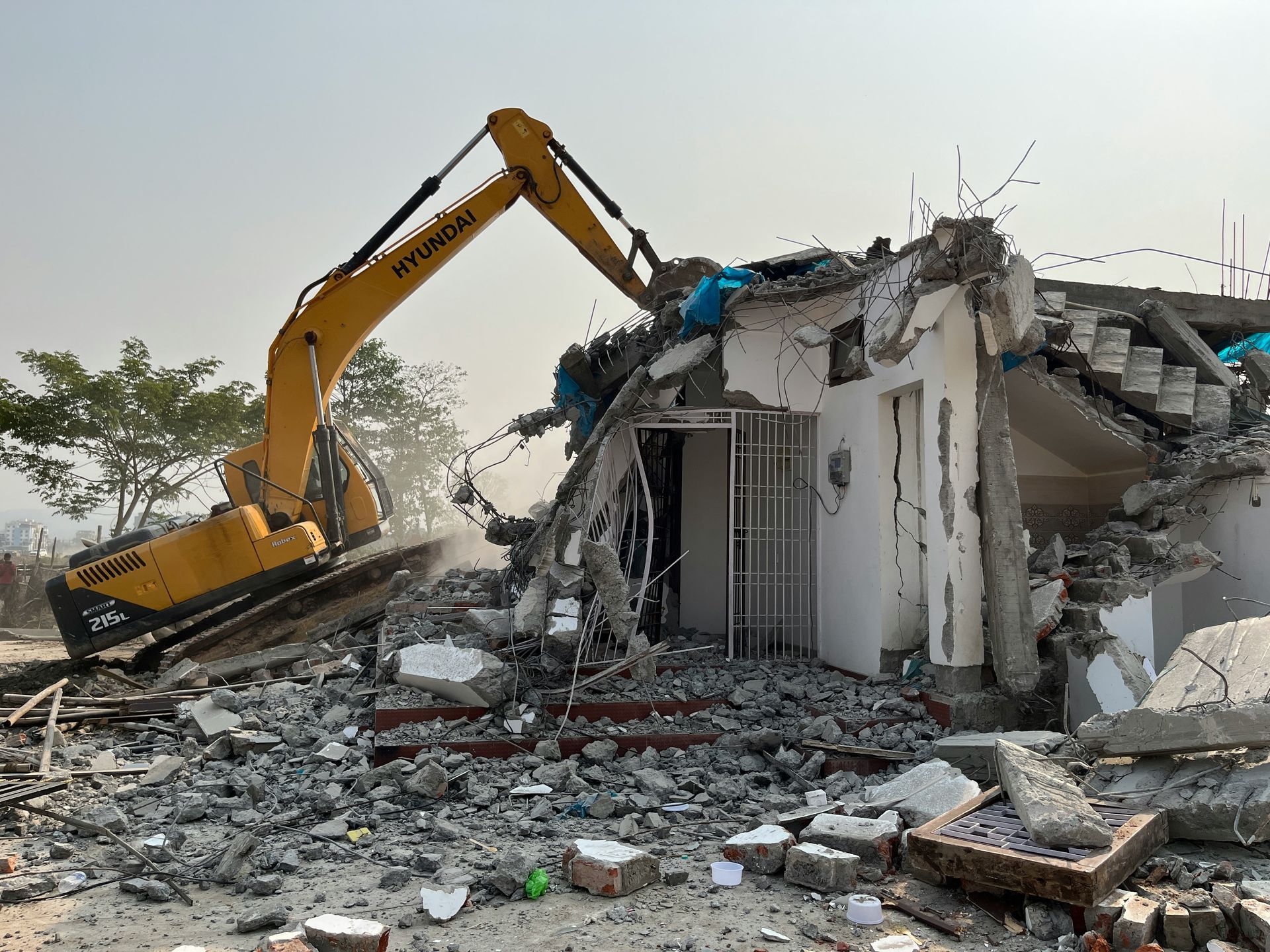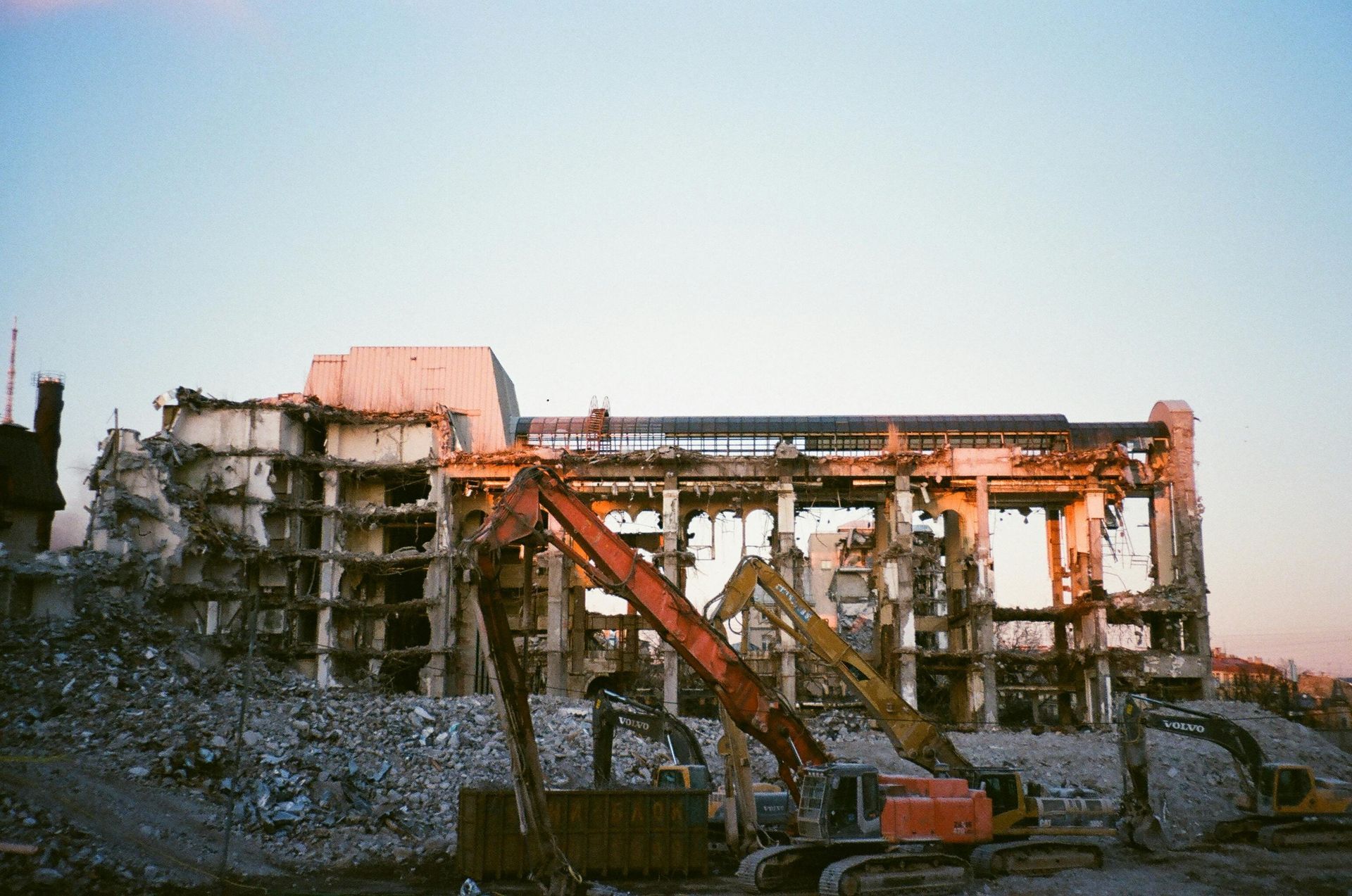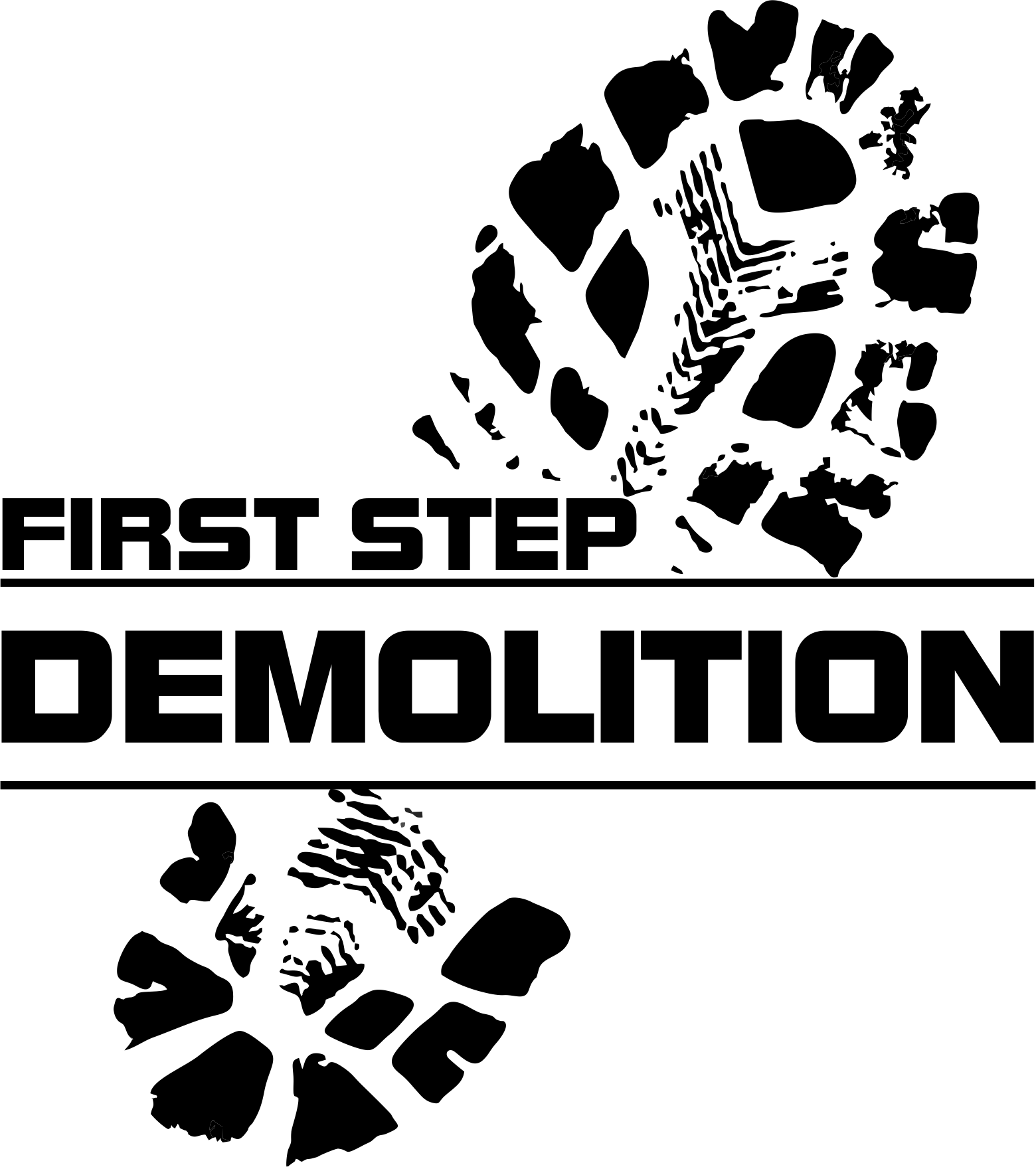Concrete Breaking vs. Concrete Cutting: What's the Difference?
In our previous blog post, we discussed the difference between concrete demolition and concrete cutting. In this current blog post, we’ll talk about concrete breaking and concrete cutting. Now when it comes to handling concrete, two of the most commonly used methods are concrete breaking and concrete cutting. While both are vital for various construction and demolition tasks, understanding the fundamental differences between them can guide project managers, contractors, and DIY enthusiasts in choosing the right technique for the job. Let’s dig deep into the distinct characteristics, applications, and advantages and disadvantages of each.
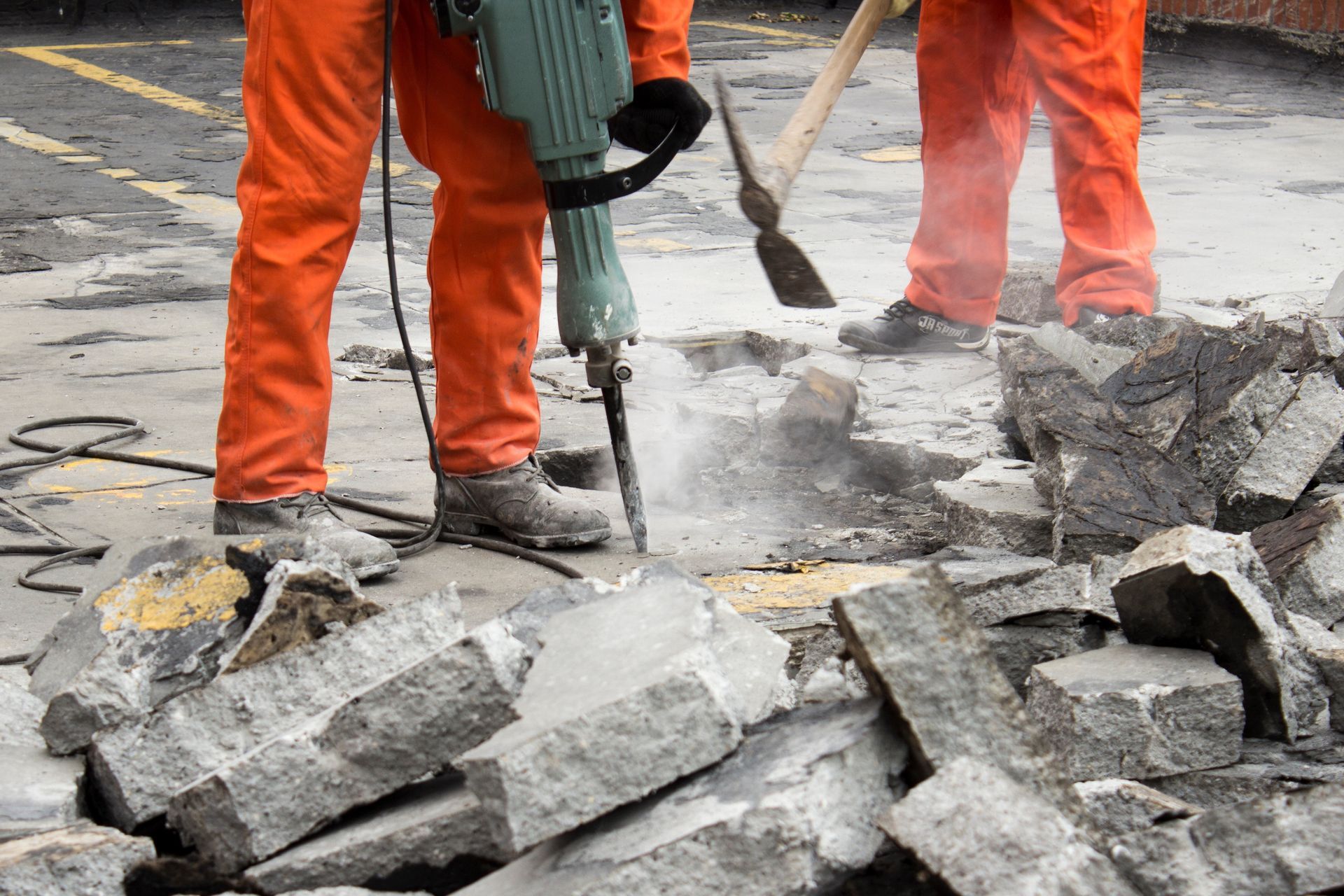
The Difference Between Concrete Breaking and Concrete Cutting
What Is Concrete Breaking?
Concrete breaking involves forcefully fragmenting or demolishing concrete structures into smaller, manageable pieces. This method typically uses manual or powered tools to apply direct force onto the concrete.
Common Tools and Equipment Used in Concrete Breaking:
- Sledgehammers
- Jackhammers
- Hydraulic breakers
- Drop hammers
Applications of Concrete Breaking:
- Total demolition of concrete structures or slabs.
- Breaking away old concrete before a renovation.
- Removing large sections of concrete, such as sidewalks or driveways.
Advantages and Disadvantages of Concrete Breaking:
To make everything fair, we have included not just the advantages but the disadvantages as well of concrete breaking. Below are the pros and cons of concrete breaking:
Advantages of Concrete Breaking:
- Cost-effective: Breaking concrete, especially using manual tools, is often cheaper than using advanced cutting methods or equipment.
- Simplicity: Many concrete breaking methods are straightforward and don't require specialized training or intricate machinery.
- Versatility: Concrete breakers can handle a wide range of thicknesses and types of concrete, from thin slabs to reinforced concrete.
- Equipment Availability: Hydraulic breakers and jackhammers are readily available for rent in most places, making it easy for contractors to access the required tools.
- Effective for Thick Concrete: Breaking is sometimes the preferred method for dealing with very thick slabs or structures.
- No Water Requirement: Unlike wet concrete cutting methods, breaking doesn't typically require water, which means no mess or water containment issues.
Disadvantages of Concrete Breaking:
- Lack of Precision: Breaking concrete can be much less precise than cutting, potentially leading to additional work or unwanted damage.
- Increased Noise and Vibration: Tools like jackhammers or hydraulic breakers are loud and produce significant vibrations, which can be disruptive and potentially harm nearby structures.
- Dust Production: Breaking concrete can produce a lot of dust, which is not only a nuisance but also a health hazard due to the risk of inhaling silica particles.
- Potential for Flying Debris: The forceful nature of breaking can propel shards or chunks of concrete, posing safety risks.
- Higher Labor Intensity: Manual concrete breaking methods can be labor-intensive and time-consuming.
- Potential Structural Damage: The force and vibrations from concrete breaking can sometimes lead to unintended structural damage, especially if not done carefully.
- Wear and Tear on Tools: The repeated impact on concrete can cause rapid wear and tear on tools, leading to frequent replacements or repairs.
While concrete breaking provides an effective way to demolish or fragment concrete, it's essential to evaluate the specific needs of a project. One must also implement safety measures to mitigate potential hazards associated with the process.
What Is Concrete Cutting?
Concrete cutting, on the other hand, is a precise method of removing or modifying concrete. It employs specialized tools with sharp blades, often embedded with diamonds, to slice through the concrete without causing it to shatter or crumble. This method is also known as saw cutting.
Common Tools and Equipment Used in Concrete Cutting:
- Concrete saws
- Diamond-tipped blades
- Wire saws
- Wall saws
Applications of Concrete Cutting:
- Creating controlled joints or openings in concrete.
- Making precise holes for doors, windows, or utilities.
- Adjusting or resizing concrete slabs or walls without total demolition.
- Preparing concrete for decorative treatments.
Advantages and Disadvantages of Concrete Cutting:
Advantages of Concrete Cutting:
- Precision: Modern concrete cutting techniques can produce very accurate and straight cuts.
- Versatility: Various tools and methods can be used for cutting concrete to suit different requirements, such as wall sawing, wire sawing, or core drilling.
- Reduced Labor: Concrete cutting can be less labor-intensive compared to traditional methods, especially with automated or semi-automated equipment.
- Minimal Noise and Dust: With wet cutting techniques, dust can be significantly reduced, and some tools produce less noise than others, making it more suitable for urban or populated environments.
- No Vibration: Unlike some demolition methods, concrete cutting produces no vibrations, thus preventing potential damage to nearby structures or utilities.
- Safety: When done correctly, concrete cutting can be safer than other demolition methods since there's more control over the process.
- Efficiency: With the right equipment, large areas of concrete can be cut or removed more quickly than with manual methods.
Disadvantages of Concrete Cutting:
- Equipment Cost: High-quality concrete cutting equipment can be expensive to purchase or rent.
- Maintenance: Concrete cutting tools and machines require regular maintenance to function efficiently.
- Skilled Labor: Proper and safe concrete cutting requires trained operators. The lack of trained professionals can be a constraint.
- Potential for Overcuts: If not controlled properly, there's a chance of overcutting, which might require repair or extra finishing work.
- Water Usage: Wet cutting methods, while controlling dust, use water, which can be wasteful and messy. It also requires water containment or clean-up in some scenarios.
- Wear and Tear: Concrete cutting blades and tools wear down over time and require replacements.
- Hazardous Dust: Even with water suppression, the silica dust produced from cutting concrete can be hazardous if inhaled, necessitating proper safety measures.
While concrete cutting offers a modern solution to many challenges faced in construction and demolition, it's essential to consider the specific requirements of each job and select the most suitable method accordingly. Proper training and safety precautions are also paramount.
Which Method is Right for Your Project: Concrete Breaking or Concrete Cutting?
Choosing between concrete breaking and cutting largely depends on your project requirements:
Precision: If you require a neat and precise cut without damaging surrounding structures, opt for concrete cutting over concrete breaking.
Volume: For large-scale demolitions where precision isn't paramount, breaking can be more efficient and economical.
Environment: Concrete cutting is typically quieter and less disruptive, making it a preferred choice in residential or populated areas. If your project is in urban areas, this method is more agreeable. However, if your project is in rural areas, opt for concrete breaking.
Budget: While concrete cutting offers precision, it might come with a higher price tag due to specialized equipment and expertise. Breaking, while potentially more labor-intensive, often has lower equipment costs.
Conclusion
Both concrete breaking and concrete cutting play crucial roles in the world of construction and renovation. By understanding the core differences between these methods, you can make informed decisions that align with your project’s objectives, budget, and desired outcome. Always remember to prioritize safety, no matter the method you choose, and consider seeking advice from professionals when in doubt.
First Step Demolition
Concrete breaking and concrete cutting are methods both often used in demolition and construction. However, they can be confusing sometimes, especially if you don’t have prior knowledge about it. If you are unsure which method is appropriate for your next project, it’s best to seek help from professionals.
Confused between concrete breaking and concrete cutting? Let First Step Demolition guide your next step. Our seasoned experts can evaluate your project needs and provide the best solution tailored just for you. Don't gamble with your project's foundation. Reach out to First Step Demolition today and take the first step towards assured excellence!
Call us today to get a free consultation!
